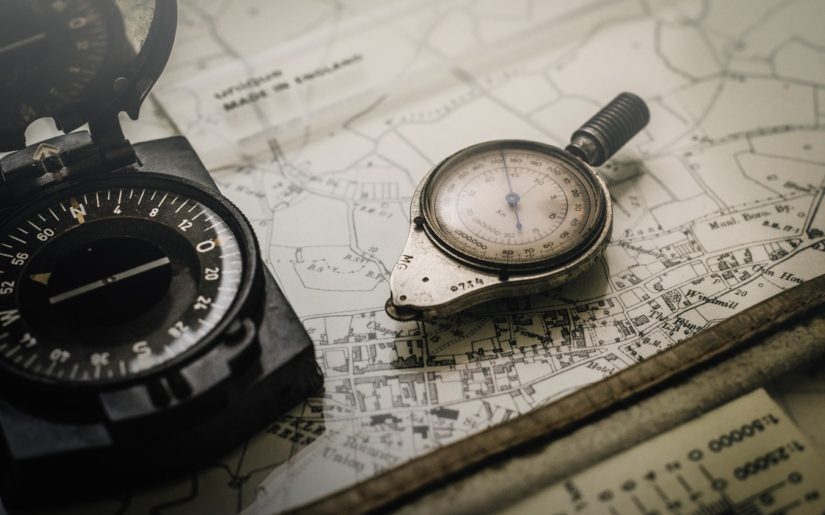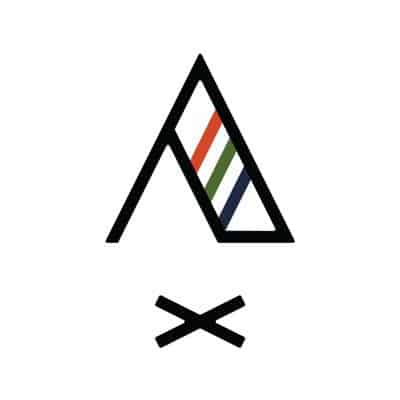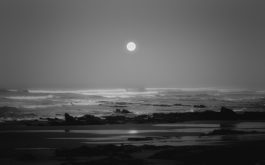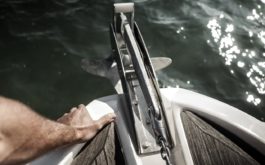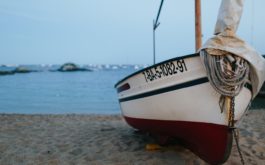An important part of boating is understanding aids to navigation. These are the system of buoys and markers that assist a boater in determining their position on the water and identify any potential dangers and waterway obstructions. Aids to navigation can be used to plot position and course on nautical charts and also assist in choosing the preferred and safest route when out on the water.
It is prohibited to interfere with any navigation aid. Operators should never tie up to a marker, buoy or any other aid to navigation. In addition, no person may willfully alter, remove or conceal a signal, buoy or other type of navigation marker.
There are two main systems of navigation: The Lateral System and The Cardinal System. All aids to navigation have identifying marks such as colours, lights and numbers.
A buoy is a floating marker or signal that is attached to the bottom of the waterway or mounted on a feature (such as an island) of the waterway. Buoys serve four main functions. They provide warnings, information, mark underwater hazards and provide a system for navigation.
Canadian Floating Buoy Styles
There are different styles of floating buoys used on Canadian waterways:
- Pillar Buoys: Pillar Buoys are typically the largest of all floating buoys and will sometimes have a lighted top. These types of buoys tend to be narrower than Can and Nun buoys.
- Spar Buoys: Spar Buoys are common on smaller waterways. They have a cylinder shape and are typically smaller than Light Buoys.
- Can Buoys: Can buoys are wider than Spar Buoys. They are always green in colour and should be kept on the left (port) side when heading upstream
- Nun/Conical Buoys: Nun buoys are also wider than spar buoys. They are always red in colour and should be kept on the right (starboard) side when heading upstream.
All floating buoys are attached to the bottom of the waterway using a structure of underwater cables and anchors. To help you know how to spot these different types of buoys, here’s what they look like.
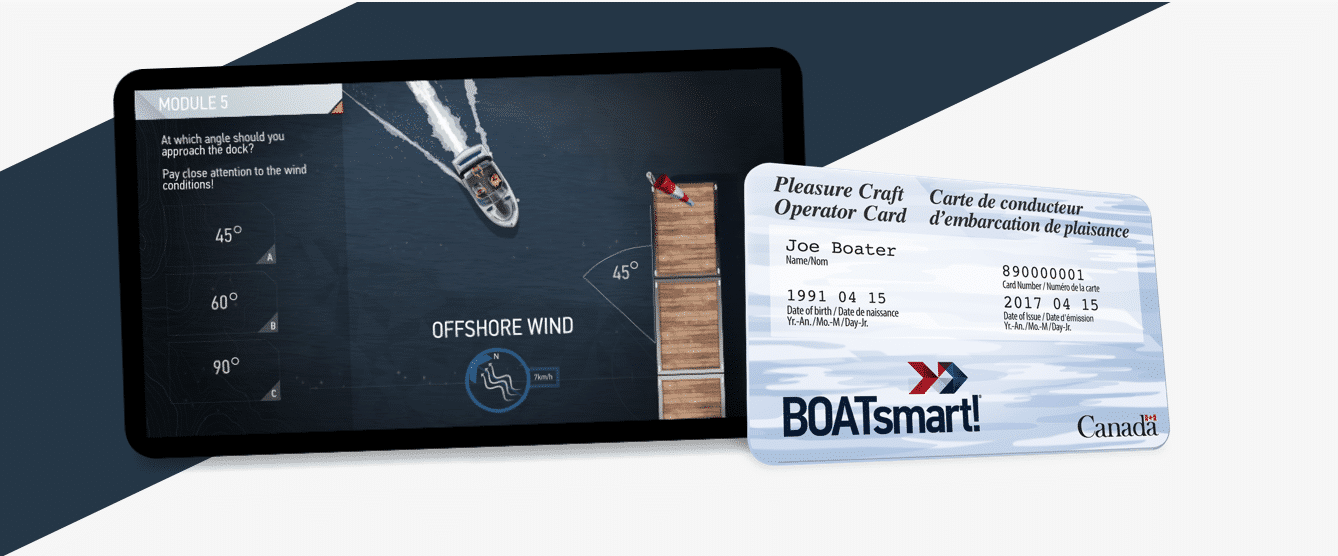
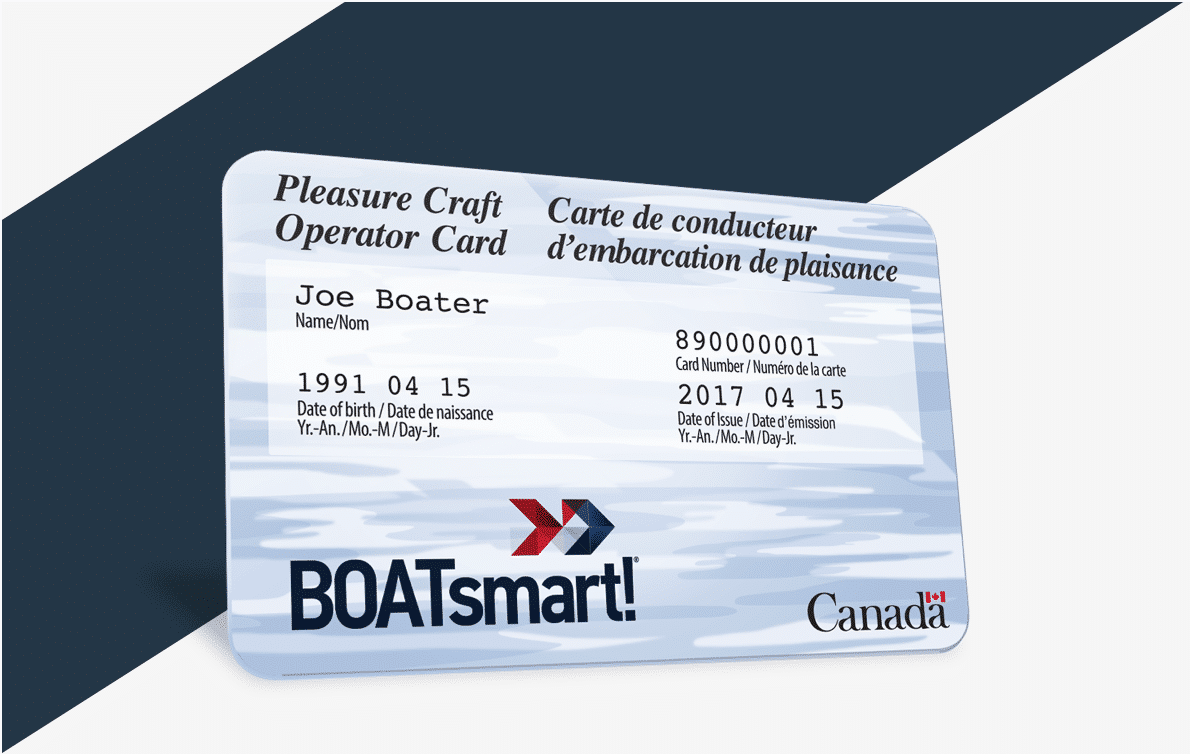
Get your Official Canadian
Boating License
The Official Transport Canada Boating Course, Test & License.
Get your Official Canadian
Boating License
The Official Transport Canada Boating
Course, Test & License.
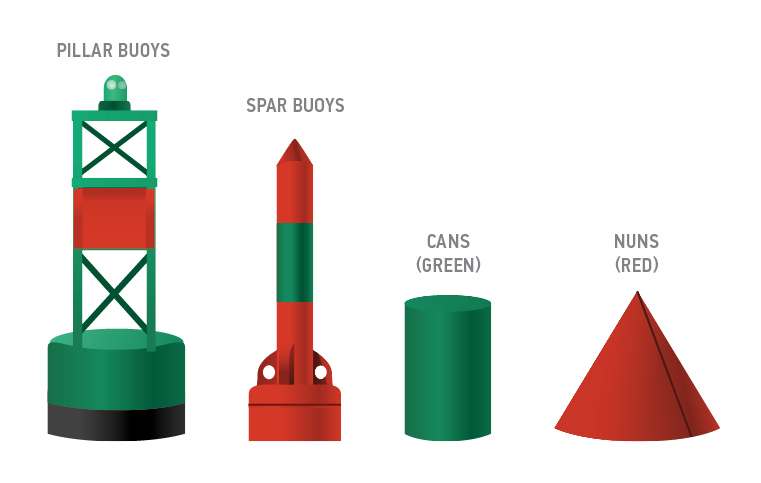
Buoy Systems
There are several systems of buoys and markers used on waterways to aid in navigation. Here are a few important systems that you should know:
- The Lateral System: The Lateral System consists of red and green buoys used to mark preferred safe routes. The Lateral System also includes Fairway Buoys, Isolated Danger Buoys and Day Beacons.
- The Cardinal System: The Cardinal System consists of yellow and black buoys that indicate safe routes by the cardinal compass points.
A third type of buoy system to be aware of is Special Purpose Buoys. These buoys may be yellow or white in colour and are used to mark dangers such as racecourses, underwater structures, pipelines, etc.
Day Beacons
Day Beacons are signs posted on land or water. They are without lights and are intended for daytime use only. Day Beacons use the same colours as the Lateral System and are typically used as channel or hazard markers. They may be marked with reflective lettering for identification on marine charts.
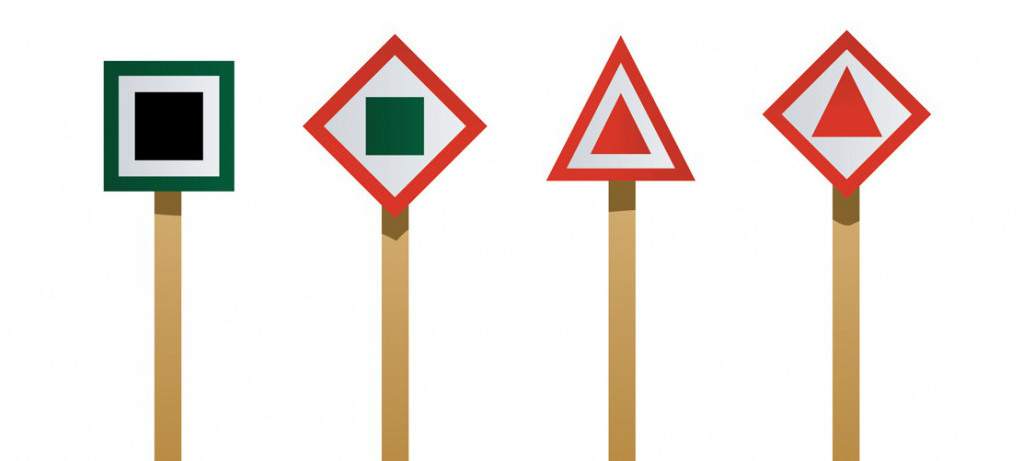
Port-Hand Day Beacon
A Port-Hand Day Beacon consists of a black and green square on a white background framed by a reflective green border. A Port-Hand Day Beacon identifies the port (left) side of a channel or hazard and must be kept on the left side when proceeding upstream. Port-Hand Day Beacons may display an odd number marked with reflective white lettering for reference on marine charts.
Port-Junction Day Beacon
A Port-Junction Day Beacon marks the junction of two channels and may be passed on either side. If the preferred channel is desired, the Port-Junction Day Beacon should be kept on the vessel’s port (left) side when travelling upstream.
Starboard-Hand Day Beacon
A Starboard-Hand Day Beacon consists of a red triangle on a white background framed by a reflective red border. A Starboard-Hand Day Beacon identifies the starboard (right) side of the channel or hazard and must be kept on the right side when proceeding upstream. Starboard-Hand Day Beacons may display an even number marked with reflective white lettering for reference on marine charts.
Starboard-Junction Day Beacon
A Starboard-Junction Day Beacon marks the junction of two channels and may be passed on either side. If the preferred channel is desired, the Starboard-Junction Day Beacon should be kept on the vessel’s starboard (right) side when travelling upstream.
